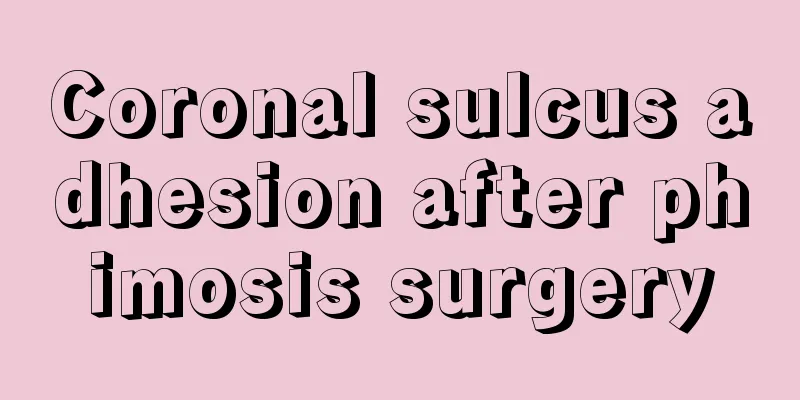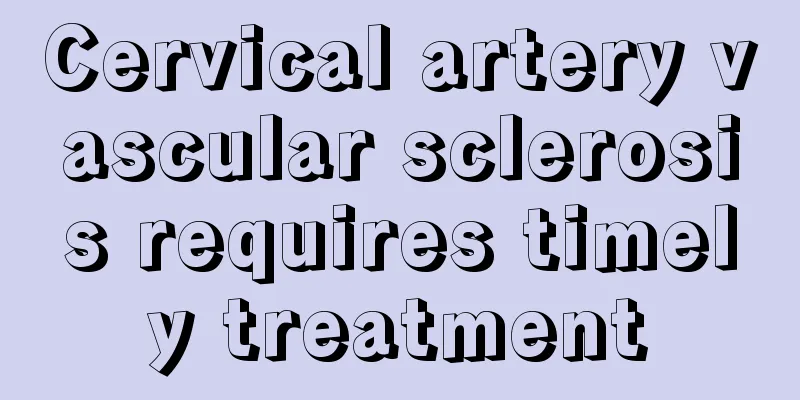What are the symptoms of cervical meridian obstruction

|
According to Chinese medicine theory, the human body is covered with various meridians. The meridians throughout the body are a whole, while the meridians in different parts of the body can be independent individuals. Meridians are directly related to the health of our body. When there is a problem with the meridians in a certain part, some symptoms will appear in that part. According to these symptoms, timely conditioning must be carried out to restore the body to health as soon as possible. Symptoms of cervical meridian obstruction 1. Its main symptoms are soreness in the head, neck, shoulders, back, arms, stiff neck and limited movement. Neck and shoulder pain can radiate to the headrest and upper limbs, and some are accompanied by dizziness and room spinning. In severe cases, there is nausea and vomiting, and the patient is bedridden. A few may have vertigo and cataplexy. 2. Some people have fever on one side of the face and sometimes sweat abnormally. Feeling of heaviness in the shoulders and back, weakness in the upper limbs, numbness in the fingers, decreased sensation in the skin of the limbs, inability to hold objects, and sometimes unconsciously dropping objects. Other patients experience weakness in their lower limbs, unsteady gait, numbness in their feet, and a feeling of walking on cotton. When cervical spondylosis involves the sympathetic nerves, symptoms may occur such as dizziness, headache, blurred vision, swelling and dryness of the eyes, inability to open the eyes, tinnitus, ear congestion, imbalance, tachycardia, palpitations, chest tightness, and even gastrointestinal bloating. 3. A small number of people experience loss of control over urination and defecation, sexual dysfunction, and even paralysis of the limbs. There are also symptoms such as difficulty swallowing and difficulty in pronunciation. These symptoms are related to the severity of the disease, the duration of the disease, and the individual's physical constitution. Most cases are mild at onset and are not taken seriously by people. Most can recover on their own, with symptoms varying from mild to severe. Only when symptoms continue to worsen and cannot be reversed, affecting work and life, will they be taken seriously. If the disease is not cured for a long time, it will cause psychological harm and produce symptoms such as insomnia, irritability, anger, anxiety, and depression. Symptoms of meridian blockage: 1. Common symptoms of obstruction of pericardium meridian: insomnia, frequent dreams, easy awakening and difficulty falling asleep; irritability, forgetfulness, chest tightness, dry mouth; neurasthenia. 2. Common symptoms of the triple burner: migraine, dizziness, tinnitus, heat on the upper body and cold on the lower body; cold hands and feet, fatigue, irritability; skin allergies; soreness and weakness in muscles and joints, and loss of appetite. 3. Common symptoms of blocked lung meridian: fear of wind, easy sweating, dry throat and cough; allergic rhinitis, dry skin and easy allergies; shortness of breath, chest congestion and dull complexion when moving. 4. Common symptoms of obstruction of the large intestine meridian: toothache, headache, dry mouth, skin allergies; blue veins and spots, weakened gastrointestinal function; periarthritis of the shoulder and chronic pharyngitis. 5. Common symptoms of spleen meridian obstruction: abdominal distension, poor absorption, and loss of appetite; easy vomiting, fatigue, and puffiness; headache, confusion, dampness, swollen feet, and loose stools; sore joints and diabetes. 6. Common symptoms of blocked stomach meridian: sore throat, stomachache, heat intolerance, indigestion; fatigue, knee joint pain, constipation; dry lips and tongue, and weight loss. 7. Common symptoms of blocked Heart Meridian: feeling upset, frightened, palpitations, stuffy heart and pain; shortness of breath, feeling stressed, depressed and irritable; oral ulcers, dry mouth and bad breath. |
<<: What symptoms will thickening of the yellow ligament of the cervical spine cause?
>>: Common factors of cheek pain
Recommend
What causes blocked ears?
If any of your friends feel stuffy in their ears ...
How to wash red wine off clothes, 4 tips to resolve embarrassment
When having a meal together, it is inevitable to ...
How to check estrogen levels
The level of estrogen can affect the manifestatio...
What are the effects of neostigmine methylsulfate?
Neostigmine methylsulfate is a common liquid medi...
What are the pathological classifications of lymphoma
Lymphoma is a very common disease in which the ly...
Coconut oil for eczema
The appearance of eczema on the skin is a very di...
How to open the canthus seamlessly
Today's surgical methods are becoming more an...
How big a thyroid nodule needs surgery? Malignant lesions require surgery
Thyroid nodules can be single or multiple. The in...
What are the benefits of okra to the body
Okra has many benefits for the body. Okra is rich...
How to store yam
Many people do not know how to store yam properly...
What to do if you stutter
Stuttering is what we call stammering. Ignorant c...
How long does a concussion coma last?
After a blow to the head, there will be a brief b...
What to do if you have tooth decay and bad breath, two types of bad breath
Tooth decay is caused by inflammation, which will...
What are the early symptoms of uterine cancer
The early symptoms of uterine cancer may not be e...
What to do if your skin is allergic to the sun? 6 ways to prevent
Skin allergy to the sun is what we often call UV ...









